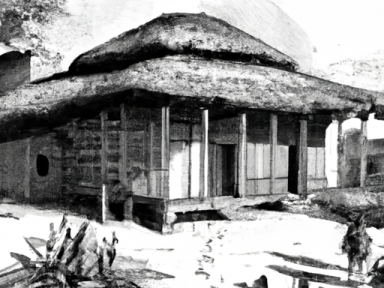
Advanced Off-Grid Construction: Building for Sustainable and Resilient Living
When it comes to preparing for uncertain times ahead, ensuring that your home is sustainable and resilient is an essential part of a self-reliant lifestyle. Traditional construction methods may not be suitable for off-grid living, as they rely heavily on external resources and infrastructure. In this article, we will explore advanced off-grid construction techniques that offer both sustainability and resiliency.
1. Cob Construction
Cob construction is an ancient building technique that utilizes a mixture of clay, sand, and straw. The resulting material is extremely durable and provides excellent insulation. Its natural composition makes it an ideal choice for off-grid living.
With cob construction, you can create strong and durable walls that can withstand extreme weather conditions. By using locally sourced materials such as clay and sand, you reduce the need for transportation and lower your carbon footprint.
Additionally, cob homes have a high thermal mass, which means they can absorb and store heat during the day and release it at night, maintaining a comfortable temperature without the need for artificial heating or cooling systems.
2. Straw-Bale Construction
Straw-bale construction is another sustainable building technique that offers excellent insulation properties. Straw bales, typically made from agricultural waste, such as wheat or rice straw, are stacked and secured together to form the walls of the structure.
The thick walls created by straw-bale construction provide exceptional thermal insulation, keeping the interior cool during hot summers and warm during cold winters. Straw bale homes are also resistant to fire, pests, and mold, making them a resilient choice for off-grid living.
Furthermore, straw-bale construction allows for creative and unique designs as the walls can be shaped and sculpted according to your preferences, providing endless possibilities for self-expression.
3. Rammed Earth Construction
Rammed earth construction is a technique that involves compacting a mixture of clay, sand, and gravel within a formwork to create solid walls. This method has been used for centuries and is renowned for its strength and durability.
Rammed earth structures have excellent thermal stability, providing natural insulation and reducing the need for additional heating or cooling systems. The thermal mass of the walls helps regulate temperature fluctuations, keeping your home comfortable in any season.
Moreover, rammed earth walls are resistant to pests, fire, and decay, making them low maintenance and resilient against various threats that could arise in an off-grid living situation.
In Conclusion
When it comes to off-grid living, advanced construction techniques like cob, straw-bale, and rammed earth provide sustainable and resilient options for creating your dream home. By utilizing locally sourced materials and reducing reliance on external resources, these methods empower individuals to live a self-reliant lifestyle.
Remember, in uncertain times, being prepared is essential. By taking action now and building an off-grid home using these advanced construction techniques, you can ensure a sustainable and resilient future for yourself and your loved ones.
So, why wait? Start researching and learning more about these construction methods, and take the first step towards a self-reliant and sustainable life.



GIPHY App Key not set. Please check settings